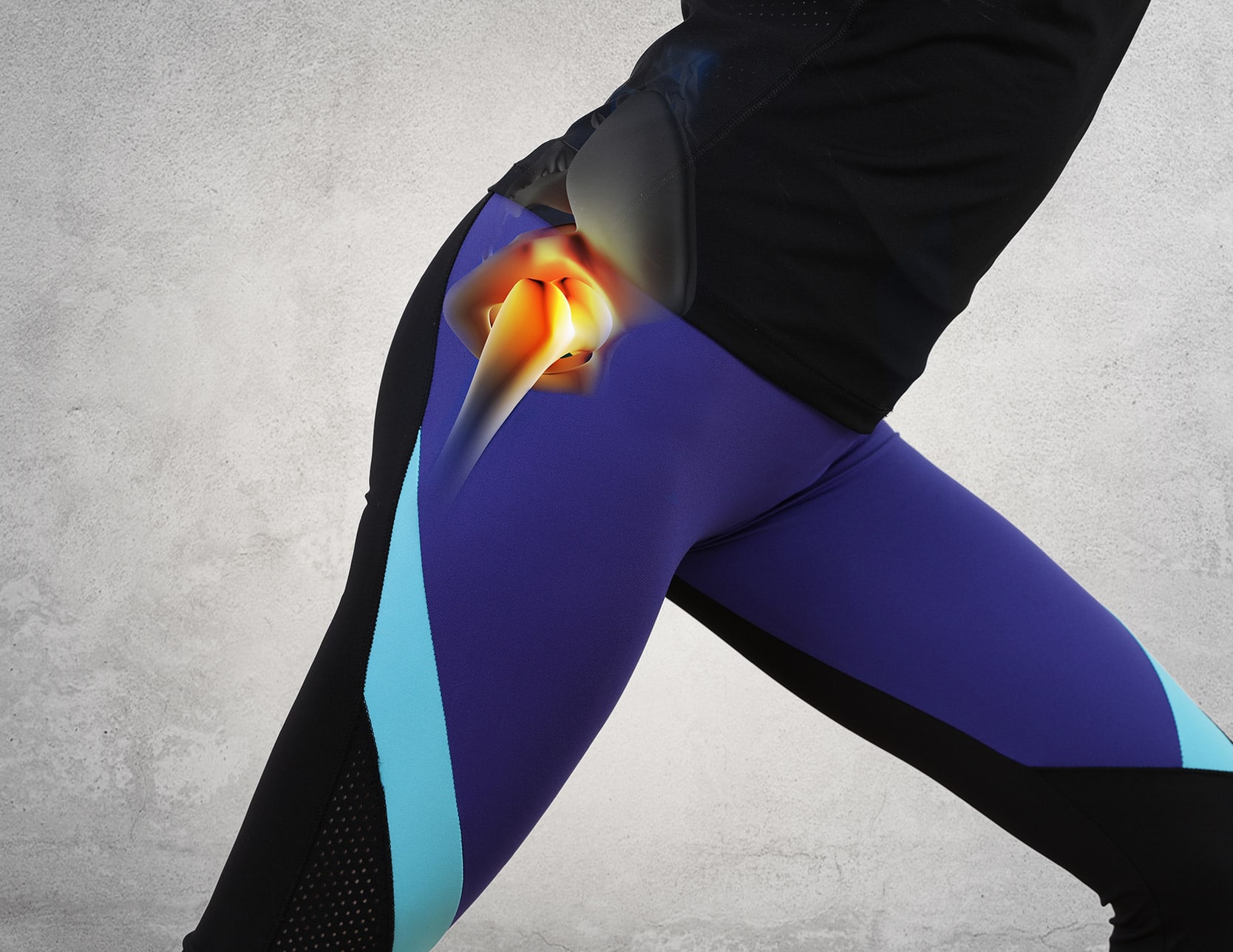Hip Pathologies
Hip pathologies are insufficiently known and are often reduced to hip osteoarthritis (called coxarthrosis). In reality, there are numerous mechanical coxopathies in athletes, rheumatological diseases, mechanical dysfunctions after hip prosthesis implantation, post-traumatic or post-fracture sequelae, as well as sequelae of childhood diseases.

Discover the pathologies
The team at Inside the Hip puts its expertise at the service of its patients to help them find the best treatment based on their conditions. Each pathology has its corresponding treatment, which is why it is necessary to obtain a good diagnosis first and foremost. The most common hip pathologies are detailed below.
Coxarthrosis
Coxarthrosis refers to hip osteoarthritis, which is a gradual wear leading to the destruction of the cartilage of the joint located at the top of the thigh, between the femur and the pelvis. Coxarthrosis starts with a degeneration of the cartilage before affecting the bone beneath the joint and the synovial membrane. This chronic disease can be disabling in daily life.
VoirHip Impingement
Hip impingement refers to the repeated collisions between the upper end of the femur and the acetabular rim during certain movements. Morphological abnormalities that lead to an abnormal reduction in the space between these two structures can be the cause of this movement.
VoirAcetabular labral lesion
The labrum is a part of the joint that acts as a shock absorber for hip movements. A fall or trauma can cause a lesion of the labrum, leading to discomfort and pain in the front part of the hip.
VoirHip dysplasia
Hip dysplasia is a pathology resulting from a developmental problem of the fetus’s hip. This congenital malformation consists of a deformation of the hip joint and is characterized by poor fitting coverage of the femur into the joint.
VoirCartilage lesions
Trauma, shock, or an accident can damage the cartilage: thinning, fissures, or even complete loss of thickness can cause discomfort, swelling, and pain attributable to a lesion.
VoirSynovial osteochondromatosis
Synovial osteochondromatosis of the hip is a pathology that affects a part of the joint: small cartilaginous formations are found within the joint. These new formations can lead to joint destruction.
VoirVillonodular synovitis
Villonodular synovitis is a joint pathology characterized by an abnormal proliferation of the synovial membrane. It is characterized by pain and joint swelling.
VoirProsthetic hips
Prosthetic hips are exposed to the risk of loosening of the hip prosthesis. This phenomenon is characterized by recurrent pain in the regions of the hip, buttock, and knee, as well as a loss of mobility due to stiffening of the joint.
VoirThe Hip: An Anatomically Complex Joint
The hip is an anatomically difficult area to access. It is the deepest joint in the human body and is located within a complex anatomical crossroads. Analyzing pain around the hip region often requires the expertise of a specialist. Indeed, the first step is to confirm the articular and/or peri-articular origin of the pain and to eliminate differential diagnoses that can mimic hip pain.
Differential Diagnoses for the Hip
There are many and can either delay the diagnosis of a hip joint pathology or be intertwined with coxopathy. Lumboradicular pathology, abdominal wall, muscle/aponeurosis deficits, and obliterative arteriopathy of the lower limbs can complicate the diagnosis. Finally, tendino-muscular pathologies are sometimes associated with coxopathy. Working in a network with experts from each field optimizes the quality of overall care.